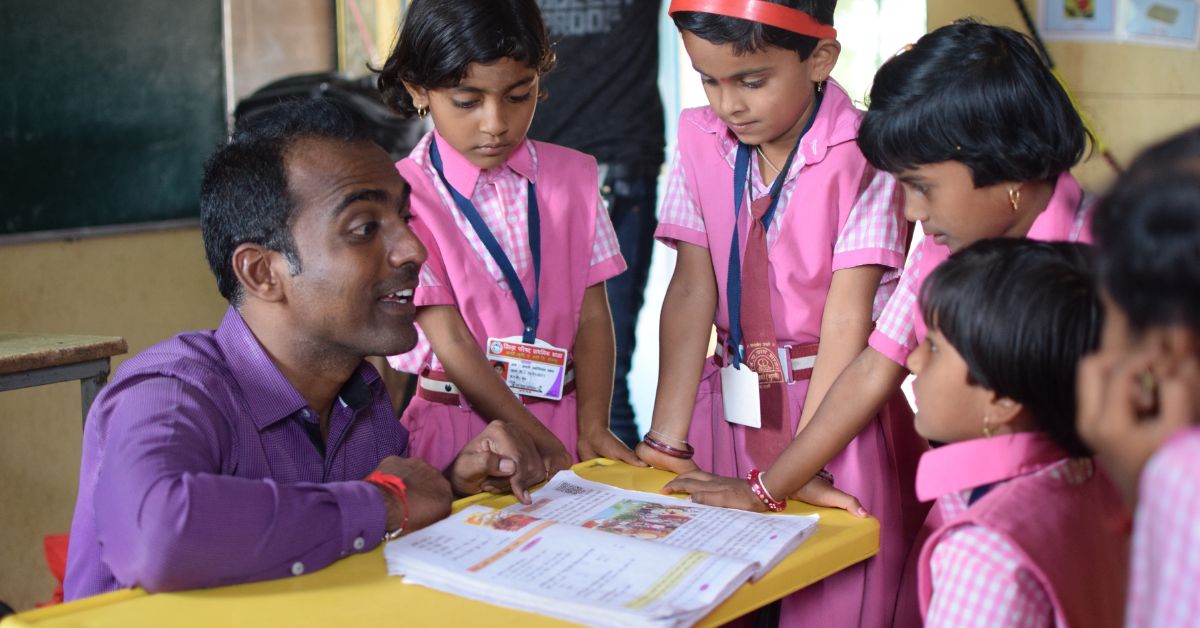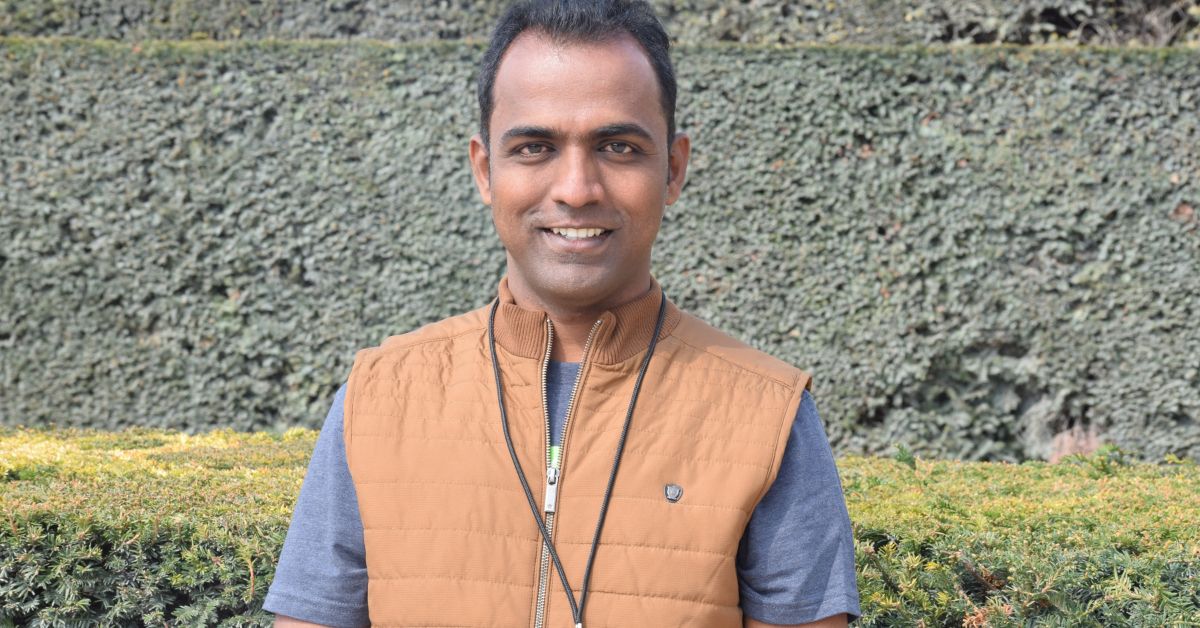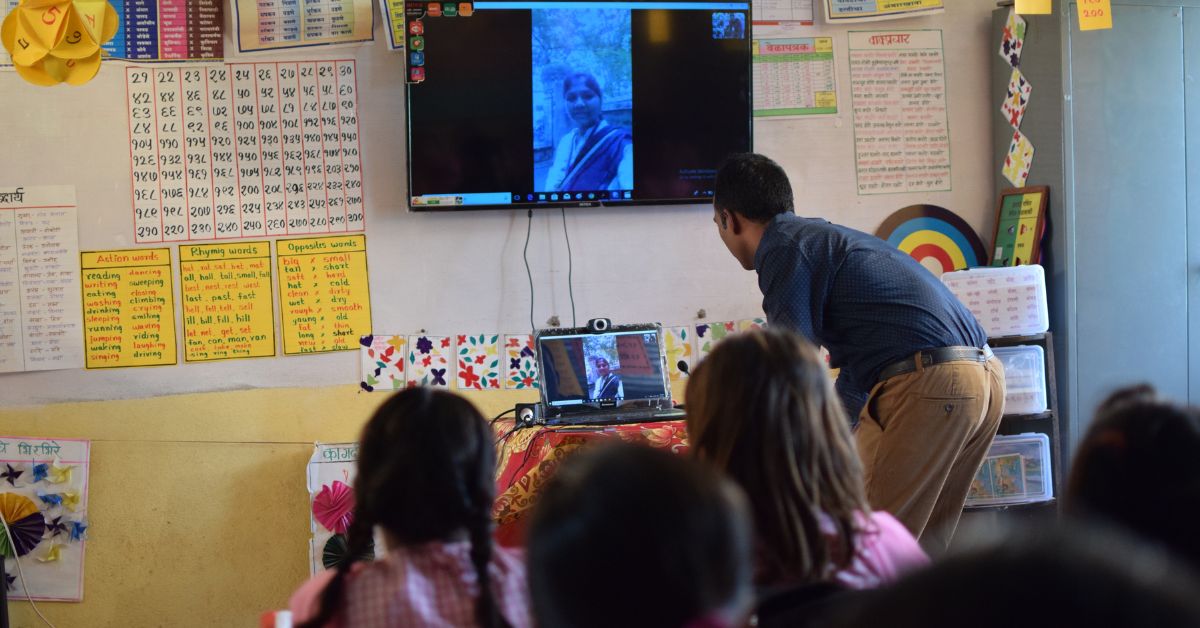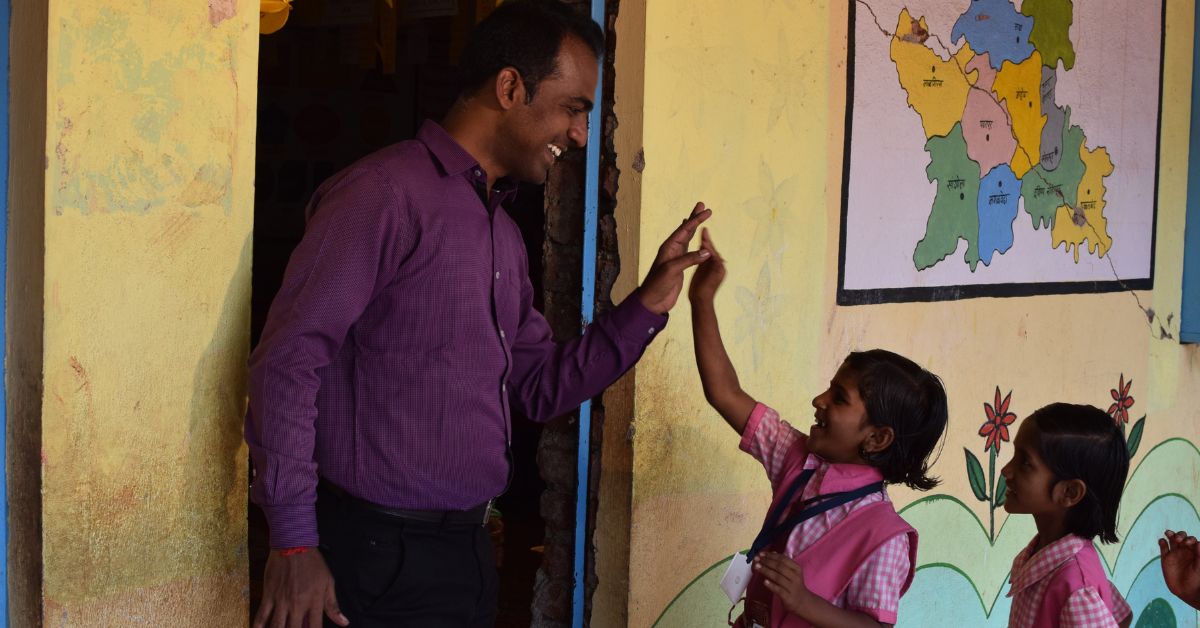After $1 Million Prize, Village Teacher’s QR Codes Transform Education in Maharashtra
Winner of the Global Teacher Prize, Ranjitsinh Disale is using his innovations to revolutionise education in Maharashtra.

Ranjitsinh Disale, recipient of the Global Teacher Prize 2020, did not always want to teach. He was an aspiring engineer, but soon had to leave college and return home due to personal reasons. It was his father who suggested he join a teacher’s training college.
Initially uninterested, teaching slowly grew on him, because he was so impacted by his own teachers there. “They boosted their students’ confidence, changed me throughout,” he recalls in an interview with The Better India. “There I learned how teachers are real changemakers. I thought it was a noble profession.”
He started thinking about how he, too, could change lives through education, especially of students from low-income backgrounds.
He undertook a six-month internship under the guidance of Mr Rajendra Mane, who taught him how to deal and empathise with students. “He taught me how to listen to their problems, to whatever they are saying to us.”
With a teaching philosophy revolving firmly around empathy and bringing about practical change, Ranjitsinh entered the field of teaching.

Today, his efforts have led to 100 per cent attendance, especially of girls, at the Paritewadi school he teaches. He also initiated the practice of embedding QR codes in textbooks and helped 300 schools adapt the same. This initiative has now been implemented all through Maharashtra. He has also set up Rs 1 lakh scholarships for the education of 10 girls.
Big challenges and revolutionary solutions
On 5 January 2009, Ranjitsinh reached Paritewadi village, Solapur district’s Zilla Parishad Primary School. “I still remember my first day. I was this very passionate teacher who wanted to change the system and had so many ideas. I just wanted a classroom.”
However, his classroom was sandwiched between a cowshed and a storeroom. On some days, the attendance was as low as two per cent. And parents weren’t complaining about the situation either. “I realised that parents didn’t understand the importance of education,” he recalls.
“To address these issues, I made a five-year plan of action and initiated several projects.”
His first step was to go into every house of Paritewadi and initiate informal dialogue with the community, understand their perspective toward education, and establish himself as their friend and confidante. “It took some time. But after six to seven months, I realised that I could bring the change that I want.”
“I ask parents a very simple question — ‘Would you like your kids to be like her [someone whose life has changed], or do you want your kids to do the same thing you’re doing?’”
“I realised that I should be innovating in the classroom, teaching in some different way,” he says. Since students are more interested in visual media, borrowing money from his father, he purchased a laptop for class to show videos on YouTube and create powerpoint presentations.

He would also play movies on the laptop. “We were just enjoying, dancing, singing, all that.” He was sending the message that school is different now — a place of fun and enjoyment. The kids then went home and discussed their day with friends, shocking those who weren’t attending class. He had made going to the classroom a more desirable option than toiling with manual labour all day. “It was to grasp the attention of the remaining few students. And they started attending class as well.”
In one and a half years, Ranjitsinh had achieved 100 per cent attendance in his classroom.
The entertainment now had to be turned into edutainment. He then set about learning each student’s learning style — be it visual media, auditory aspects, face to face explanations, or others — and grouped kids according to their learning style, modifying his teaching accordingly.
He also implemented the ‘Alarm On, TV Off’ initiative, where he put an alarm on the school’s building, which would ring promptly at 7 pm each evening. “This was an indication for parents to stop working or doing whatever they were doing. Sit with your kids and ask about school, help them complete their homework.”
Earlier in the afternoon, he would send parents text messages briefing them on what they should do and ask in the evenings, and about the homework he’s assigned. Such parental involvement reinforces the importance of studies among students, he says.
Ranjitsinh says that while these things are routine in urban areas, in rural parts, parents believed that education was the forte of the teacher and not their cup of tea. “But the education system should not be isolated from society. Teachers, parents, and students are the three pillars of education. I wanted these three pillars to work in tandem.”

He also started recording his lessons and sharing these on mobiles, but faced several technological issues. Inspired by a QR code payment he saw at a shop, Ranjitsinh then decided that education should also be this accessible. He taught himself what a QR code was and how to embed information into it.
“I created 27 QR codes for my students. It was helping kids to learn in a much better way, comprehend much more.”
All students had to do now was scan a QR code with the phones they had and access digital content, and they could grasp concepts much better. This, he says, was especially useful for girls, who often had to shoulder responsibilities at home and couldn’t always make it to school. He adds that many girls also stayed away from school when they were menstruating. With the QR codes, their education continued unhindered.
Ranjitsinh realised that this was a great aid to education, making it much more accessible, and a QR code revolution soon set in motion.
For one year, he created QR codes for 300 schools around him. A deeply unique idea, it soon reached the notice of the Maharashtra government, which saw this as an idea they should be replicating. In 2019, Human Resource Development Minister Prakash Javadekar announced that all NCERT (National Council of Education Research and Training) textbooks would be embedded with QR codes.
“During the pandemic, this helped a lot. Schools were closed but still students were able to continue studying.” Students could learn when they wanted, how they wanted.
Marching diligently toward a brighter future

Following his 2020 Global Teacher Prize win, Ranjitsinh promptly shared half of his $1 million win with the other finalists.
“I’m getting the prize money over the next ten years, given at 10 per cent each year. I get around Rs 16 lakh after taxes etc.” With his 2021 sum, he has given scholarships of Rs 1 lakh each to 10 girls who are completing their graduation. He has invested the other Rs 6 lakh in his ‘Let’s Cross the Borders’ project, which connects young people from India and Pakistan, Palestine and Israel, Iraq and Iran, and other conflict zones.
“After getting the award, I’m getting requests from across the world about wanting to participate in the course. I have to redesign the curriculum now,” he says.
The 2022 sum he plans on investing in teacher’s innovation. “There’s no mechanism to support teachers for their projects. So I’m giving incentives to teachers, supporting their initiatives, their projects.”
He’s especially focused on this because of the way he sees teachers being treated in the country today. “We are not respecting their work. We’re not respecting their status in society.” He points out that if we want our kids to do better, want more education, then one needs to recognise teachers as the central point. India, he says, needs to be investing more in its teachers.
“Just take the example of the cricket team. We have these 11 players. But to support those 11 players, we have a team of six to seven coaches. But I don’t see any support on the ground for teachers. What if a teacher doesn’t know how to teach disabled students? What about teachers who are feeling depressed? Is there any mechanism through which we could find out their problems? No.”
Besides supporting teachers, Ranjitsinh also wants to see a more holistic approach toward Indian education. “I would like to see the private sector and government sector working together,” he says, addressing the current gap between the two.
While the government has massive reach, the private sector has advanced technology and can offer unparalleled support, he adds.
As he envisions and works toward a brighter future for students, this teacher is still working out of Paritewadi, at least for the next six months. But he’s looking for a transfer next year, so he can spread his impact in more tangible ways and touch the lives of students like he’s set out to do from day one.
Edited by Divya Sethu
If you found our stories insightful, informative, or even just enjoyable, we invite you to consider making a voluntary payment to support the work we do at The Better India. Your contribution helps us continue producing quality content that educates, inspires, and drives positive change.
Choose one of the payment options below for your contribution-
By paying for the stories you value, you directly contribute to sustaining our efforts focused on making a difference in the world. Together, let’s ensure that impactful stories continue to be told and shared, enriching lives and communities alike.
Thank you for your support. Here are some frequently asked questions you might find helpful to know why you are contributing?


This story made me
-
97
-
121
-
89
-
167











